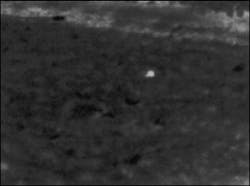The fire service frequently and rightfully laments the fact that law enforcement receives billions of dollars more in federal funding and grants than the fire service. Firefighters have, however, adopted certain technologies at a much faster rate than their police brothers, placing the fire service in a position to be called upon to assist its better-funded sister service. Chief among these is thermal imaging technology. While the advantages of thermal imagers (TIs) are well-known in fire departments, many police departments are not fully aware of how the technology may be applied in their work.
While some police officers may ask for your TI and assistance, others may not recognize that you have a tool that can help them. By building a solid, professional relationship between local police and fire agencies, firefighters can ensure that police officers know when to ask for your help. In time, law enforcement will come to adopt thermal imaging as the fire service has adopted the technology, deploying units specifically designed to meet the challenges they face on the job. Until then, firefighting units can help serve their needs.
The Essentials
When you assist the police with your fire service TI, the benefits and operational aspects of the TI don't change. But the mentality does, so remember these essentials:
- Thermal imaging is frequently misrepresented on TV and in the movies, so ensure that police officers have realistic expectations of how your TI functions, and they know its limits. Remind them that a thermal imager generally does not "see through" anything.
Practice Makes Perfect
The best way to improve your relevant skills with the TI is to go outside at night and practice with it. Choose a local park or a field, and have members take turns hiding while other members use the TI to search for them. The hiding members can wear turnout gear to help hide their heat, and should also hide in and around bushes and shrubs. By perfecting your search skills, you will become a better teacher to any police officer you may have to instruct on TI use.
When you schedule outdoor drills at night, invite your local police officers to watch and learn. In many police departments, officers are assigned to specific areas and work them regularly. You can build a relationship with the same officers to whom you may have to teach thermal imaging. Plus, they will get a chance to see how your great tool truly performs.
Table Talk
Due to civil rights and constitutional concerns, law enforcement officers face tighter restrictions on the types of equipment they use and how they use them. Thermal imaging is "approved" for police officers after the technology is successfully used in a specific application and then survives a court challenge regarding the appropriateness of the TI use. For fire service thermal imagers, the "approved" police applications include:
- Search and rescue operations
- Environmental law enforcement (tracking the source of pollution)
- Officer safety
- Fugitive searches
- Disturbed surface investigations (buried evidence)
- Structure profiles (indoor marijuana-growing operations)
- Marine and ground surveillance
- Perimeter surveillance
- Accident/collision investigation (skid mark location and evidence collection)
- Vehicle profiles/hidden compartments (smuggling humans or drugs in hidden compartments)
For your Table Talk training, invite a local "beat cop" to the firehouse for coffee and discuss the list. He can explain the challenges the police encounter, while you can explain how (and why) the TI could help overcome those challenges.
Final Report
Your TI has become a critical tool for you in your operations. It is also a tool that can help your local police department. As police and fire departments face the post-9/11 world, the need for cooperation and communication is greater now than ever before. By sharing knowledge and tools, we can make each other's jobs easier and safer, while promoting better relationships between the services.
Jonathan Bastian is a thermal imaging training consultant for Bullard. He is certified as a thermal imaging instructor by the Law Enforcement Thermographers' Association (LETA), the international public safety organization specializing in thermal imager certification and training. He is also the author of the Fire Department Training Network "FireNotes" book, Thermal Imaging for the Fire Service. He is a member of the NFPA Technical Committee on Fire Service Training. Educated at Brown University and licensed as a high school teacher in Illinois, Bastian served 12 years on the North Park, IL, Fire Department, including the last three as a captain. As health and safety officer, he led the development and implementation of the department's rapid intervention team SOG. Bastian is a certified Fire Instructor I and Firefighter III, and he spent 12 years as an EMT-I/D. He has taught classes on thermal imaging, rapid intervention teams, and search and rescue operations. He is currently a public safety official in Central Kentucky. If you have questions about thermal imaging, please send them to [email protected]





